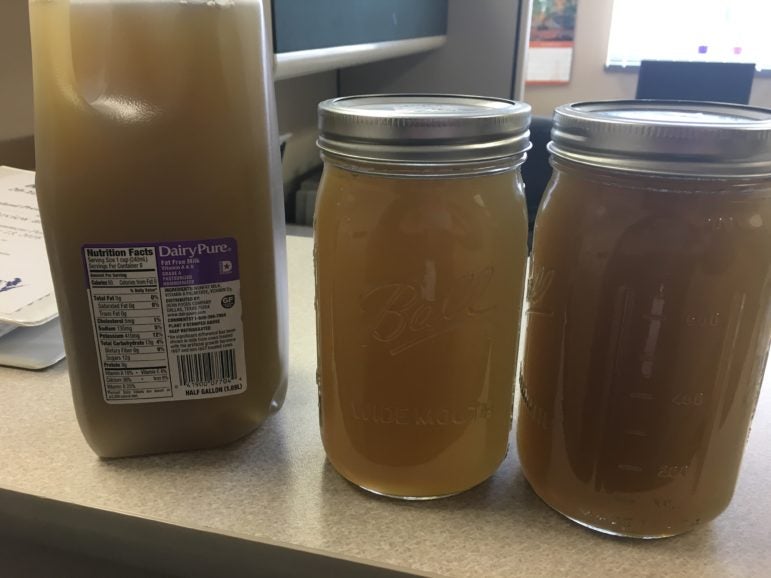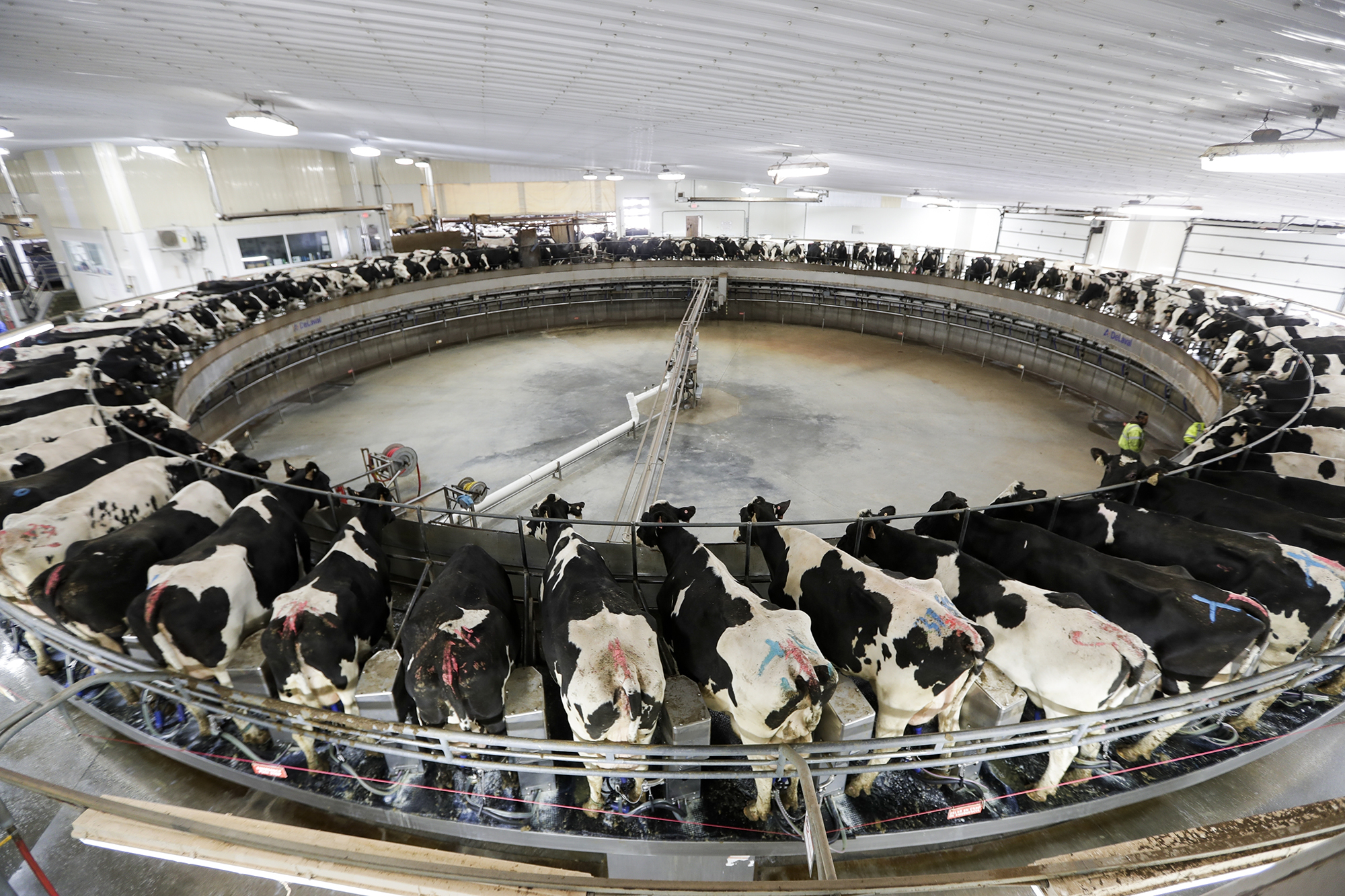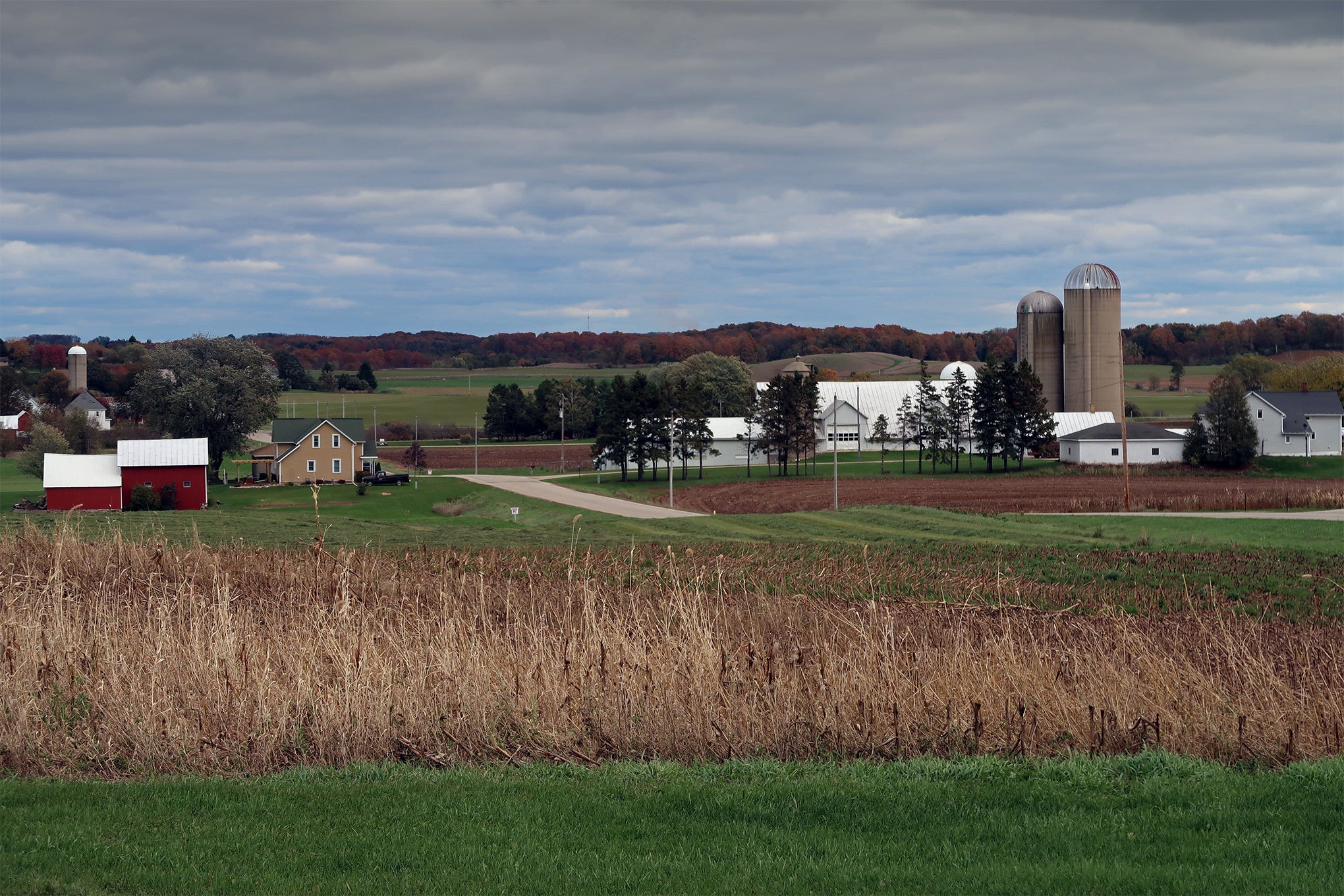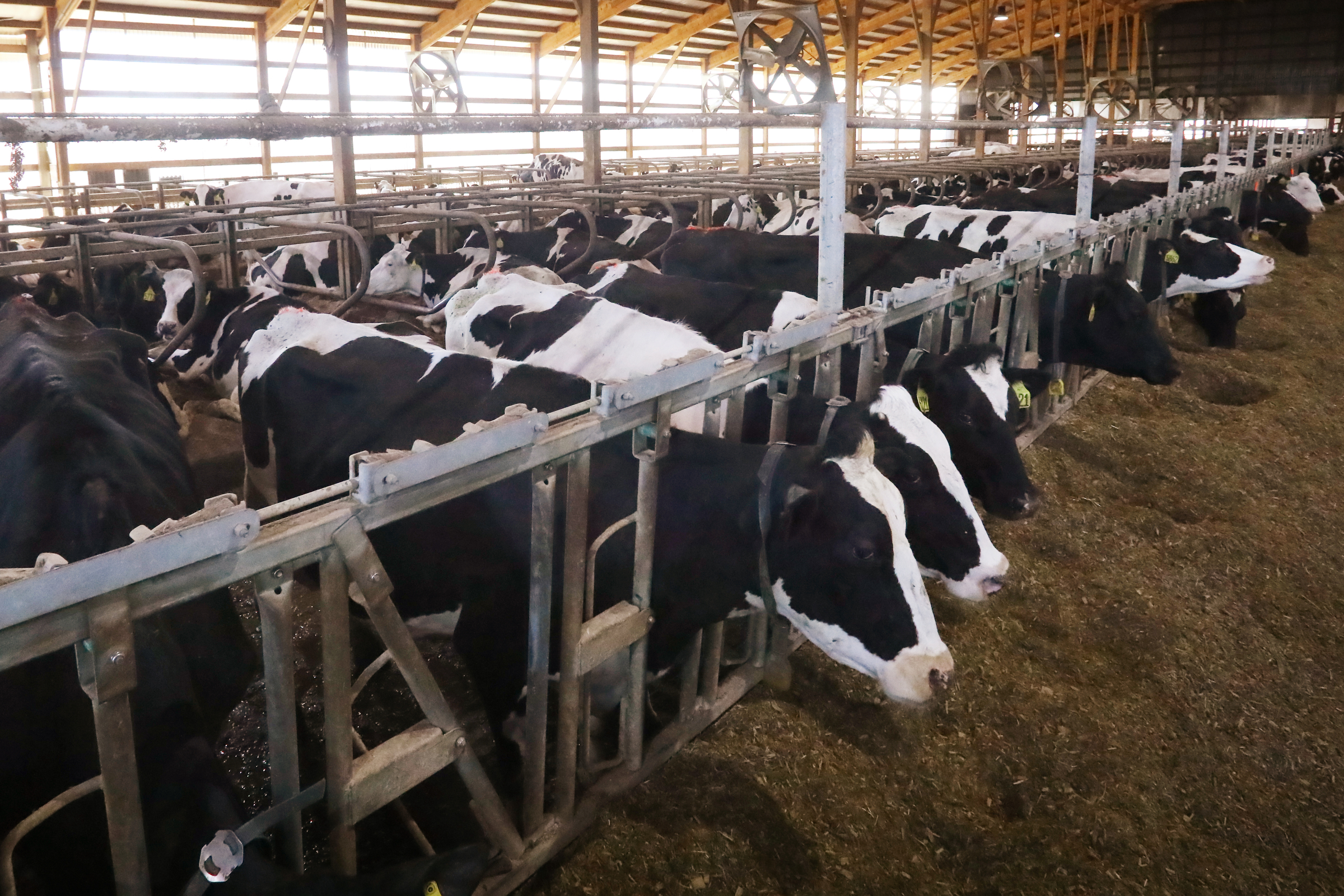Scientists are one step closer to understanding how dangerous contaminates from fecal matter are entering private wells in Kewaunee County. New research by U.S. Department of Agriculture microbiologist Mark Borchardt shows nitrate and coliform in the water mostly comes from agriculture — and not human waste.
“Where we see the strong relationships, the strong linkages, those are with agricultural factors. So that would suggest that agriculture is primarily responsible for those two contaminants,” he said in an interview with Wisconsin Public Radio.
Borchardt presented his updated findings on the risk factors associated with contamination in wells at the Midwest Manure Summit in Green Bay on Wednesday. In 2017, his research found more than 60 percent of wells sampled in Kewaunee County were contaminated with fecal microbes, which can come from both septic systems or animal waste.
Stay informed on the latest news
Sign up for WPR’s email newsletter.
The new study aims to understand the precise sources of contamination and how certain factors can reduce or increase the risk of tainted drinking water. Borchardt used models to predict how those factors — like the distance of a well from a manure lagoon or agricultural field, weather and the quality of well construction — can impact contamination levels.
Borchardt’s study found the number one risk factor for contamination was the proximity of a well to a manure storage pit.
Borchardt said the closest well in the study was 150 feet from a manure pit, but even wells three miles away still have some risk of being contaminated with coliform.

Mark Borchardt, a microbiologist with the U.S. Department of Agricultures Agricultural Research Service, presented data on water contamination in Kewaunee County during a meeting at the Expo Hall at the Kewaunee County Fairgrounds, June 7, 2017. Coburn Dukehart/Wisconsin Center for Investigative Journalism
The contaminants investigated were nitrate, coliform bacteria, human fecal microbes, bovine fecal microbes and other fecal microbes regardless of the source. The models accounted for the effects of multiple risk factors at the same time.
Don Niles, a Kewaunee County dairy farmer and president of the nonprofit Peninsula Pride Farms, said the findings “…tell me that we need to come up with better management practices, working together as farmers to find out how we can reduce nitrates in areas where they tend to be concentrated.”
Niles’ group advocates for practices such as applying manure to fields twice a year rather than once in order to minimize nitrate density, and planting cover crops to absorb more manure.

Don Niles, a co-owner of the Dairy Dreams farm, is seen at a meeting with the DNR, EPA and residents of Kewaunee and Door Counties held at the Expo Hall at Kewaunee County Fairgrounds in Luxemburg, Wis., June 23, 2016. Coburn Dukehart/Wisconsin Center for Investigative Journalism
He said for farmers, solving the problem may not be straightforward
“In some cases (we’re) changing farming practices that are over 100 years old, and we want to make sure we’re going in the right direction and not the wrong direction,” Niles said.
Kewaunee County, where cattle outnumber people nearly 5 to 1, is a focal point in Wisconsin over whether local, state and federal governments adequately protect drinking water from manure from dairy farms, especially in areas of fractured bedrock, which is common in northeastern Wisconsin. The fractured bedrock allows for water to easily infiltrate to the subsurface, especially after rain or or snowmelt.
The contamination of drinking water by manure has become a key political issue in Wisconsin, with Gov. Tony Evers declaring 2019 “the year of clean drinking water.”
In recent years, the struggling dairy industry has consolidated and increased production, with smaller farms closing and concentrated animal feeding operations (CAFOs) expanding to house thousands of cows. The average dairy cow has gotten larger, eats more and produces more manure. As cows are concentrated in certain areas, their manure is too. And that is causing major problems.
This manure and its components, including bacteria, nitrate and harmful illness-causing pathogens, create a public health hazard for over 100,000 families, the Wisconsin Center for Investigative Journalism found. Nitrate is a serious health hazard to babies and pregnant women.

A karst cliff face is exposed at the George K. Pinney Park in southern Door County. The fractured bedrock is common in Door and Kewaunee counties, allowing contaminants on the surface to move rapidly through the fractures into the groundwater. Coburn Dukehart/Wisconsin Center for Investigative Journalism
Among Borchardt’s findings:
- Septic systems were not linked with coliform and nitrate contamination, suggesting the sources of these contaminants are agricultural.
- Coliform bacteria contamination is linked with how close a well is to a manure lagoon.
- High nitrate contamination (greater than the health limit of 10 parts per million) is linked to presence of agricultural fields around a well, distance to the nearest agricultural field, distance to nearest manure lagoon and depth to bedrock.
- The higher the number of septic system drain fields around a well, the greater the probability of the well becoming contaminated with human wastewater.
The timing of the research is significant, as the Legislature’s new bipartisan Water Quality Task Force is aimed at investigating how to improve drinking water in Wisconsin. Among the strategies to be considered: best practices for soil mapping and data collection; identifying sources of contamination; better management of runoff; and improving well and septic system construction. Rep. Joel Kitchens, R-Sturgeon Bay, whose district includes Kewaunee County, is a member of the task force.
Borchardt plans to repeat the same study in southwest Wisconsin with a team of researchers. His recent study showed 42 percent of private wells tested in Iowa, Grant and Lafayette counties were contaminated.





